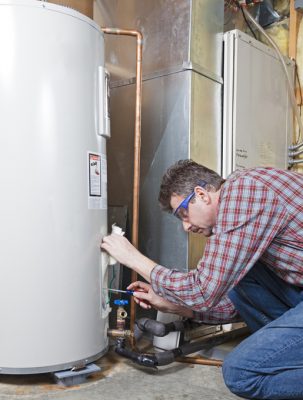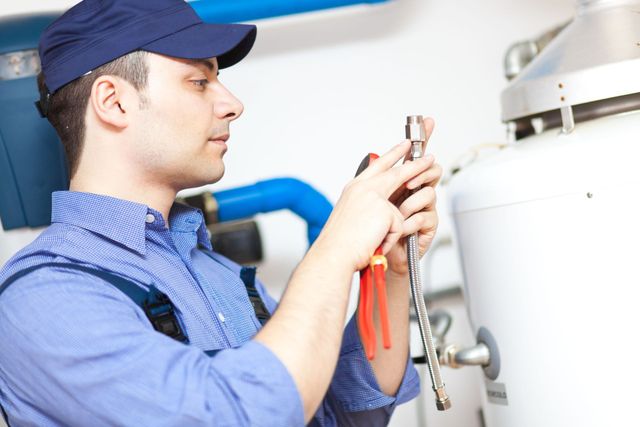Best Practices for Maintaining Your Home's Hot Water SystemHow to Successfully Care for Your Home's Hot Water System
Best Practices for Maintaining Your Home's Hot Water SystemHow to Successfully Care for Your Home's Hot Water System
Blog Article
Each person will have their own thinking when it comes to How to Maintain Your Water Heater & Prolong its Life.

Warm water is crucial for day-to-day comfort, whether it's for a rejuvenating shower or cleaning recipes. To guarantee your hot water system runs successfully and lasts longer, regular upkeep is essential. This article offers useful suggestions and understandings on just how to preserve your home's warm water system to stay clear of disturbances and costly repairs.
Introduction
Preserving your home's hot water system may appear overwhelming, yet with a couple of straightforward actions, you can ensure it operates smoothly for years to come. This overview covers whatever from comprehending your hot water system to DIY maintenance suggestions and understanding when to contact expert assistance.
Significance of Maintaining Your Hot Water System
Regular upkeep not just expands the life-span of your warm water system however likewise ensures it operates efficiently. Overlooking maintenance can lead to decreased efficiency, greater power costs, and also premature failure of the system.
Signs Your Hot Water System Needs Upkeep
Recognizing when your warm water system needs attention can prevent major concerns. Keep an eye out for indications such as inconsistent water temperature, weird sounds from the heating unit, or rustic water.
Understanding Your Warm Water System
Prior to diving right into maintenance tasks, it's handy to recognize the fundamental components of your hot water system. Commonly, this consists of the water heater itself, pipes, anode poles, and temperature level controls.
Regular Monthly Maintenance Tasks
Normal regular monthly checks can help capture small problems before they rise.
Purging the Water Heater
Purging your hot water heater removes debris accumulation, enhancing efficiency and lengthening its life.
Checking and Replacing Anode Rods
Anode poles avoid corrosion inside the container. Examining and replacing them when worn is essential.
Inspecting and Changing Temperature Setups
Changing the temperature setups ensures ideal efficiency and security.
DIY Tips for Upkeep
You can perform numerous maintenance jobs yourself to maintain your hot water system in leading condition.
Looking for Leaks
Regularly check pipes and links for leaks, as these can cause water damage and higher costs.
Testing Stress Alleviation Valves
Checking the stress relief valve guarantees it works properly and prevents extreme pressure accumulation.
Shielding Pipes
Shielding hot water pipelines reduces warm loss and can conserve energy.
When to Call an Expert
While do it yourself maintenance is valuable, some issues call for professional competence.
Complex Problems Calling For Professional Assistance
Instances include major leakages, electrical problems, or if your water heater is constantly underperforming.
Regular Specialist Maintenance Perks
Specialist maintenance can include detailed examinations, tune-ups, and ensuring compliance with security criteria.
Conclusion
Routine upkeep of your home's warm water system is essential for effectiveness, durability, and price financial savings. By following these suggestions and understanding when to look for specialist help, you can guarantee a dependable supply of hot water without unforeseen disturbances.
How to Maintain an Instant Hot Water Heater
Before tinkering with your hot water heater, make sure that it’s not powered on. You also have to turn off the main circuit breaker and shut off the main gas line to prevent accidents. Also turn off the water valves connected to your unit to prevent water from flowing into and out of the appliance. 2. When you’re done, you have to detach the purge valves’ caps. These look like the letter “T” and are situated on either side of the water valves. Doing so will release any pressure that has accumulated inside the valves while at the same time avoid hot water from shooting out and burning your skin. 3. When the purge valves’ caps are removed, you have to connect your hosing lines to the valves. Your unit should have come with three hoses but if it didn’t, you can purchase these things from any hardware or home repair shops. You can also get them from retail stores that sell water heating systems. Read the user’s manual and follow it to complete this task properly. When the hosing lines are connected, open the purge port’s valves. 4. You should never use harsh chemical cleaners or solutions when cleaning your unit. Make use of white vinegar instead. It should be undiluted and you’ll probably use about 2 gallons. 5. Now flush your water heater. This task should probably take about 40 minutes. We can’t give you specific directions for this because the procedure is carried out depending on the type, model and brand of your heater. With that being said, refer to the user’s manual. 6. When you’re done draining the unit, you have to turn off the purge port valves again. Remove the hosing lines that you earlier installed on each of the water valves. Put the valve caps (purge port) back in their respective places and be very careful so as not to damage the rubber discs that are found inside these caps. 7. Now that everything’s back in place, check your user’s manual again to find out how to reactivate your water heating system. 8. Once it is working, turn one of your hot water faucets on just to let air pass through the heater’s water supply pipes. Leave the tap on until water flows smoothly out of it. https://www.orrplumbing.com/blog/2014/september/how-to-maintain-an-instant-hot-water-heater/

I ran across that review on What Kind of Maintenance Do Water Heaters Need? while exploring the search engines. Enjoyed our post? Please share it. Help other people locate it. Thank you for your time. Please come visit our website back soon.
Click Here To Find Out More Report this page